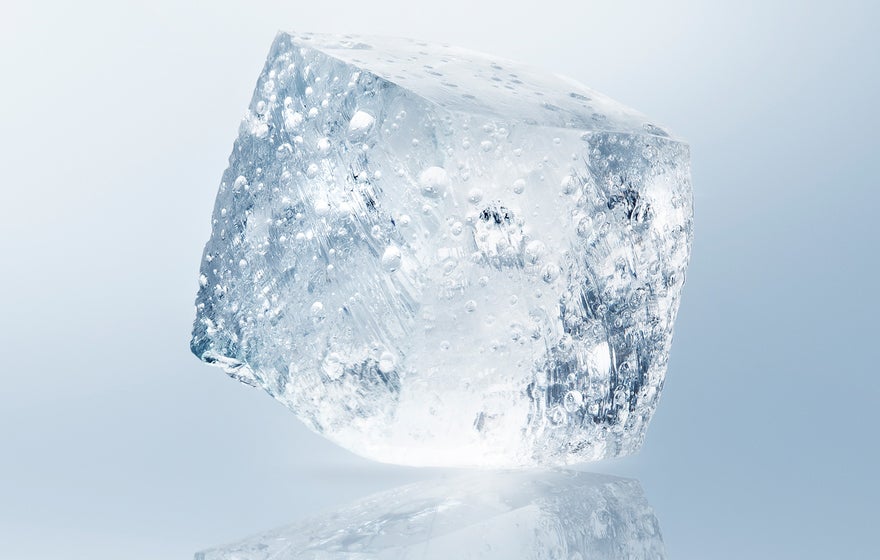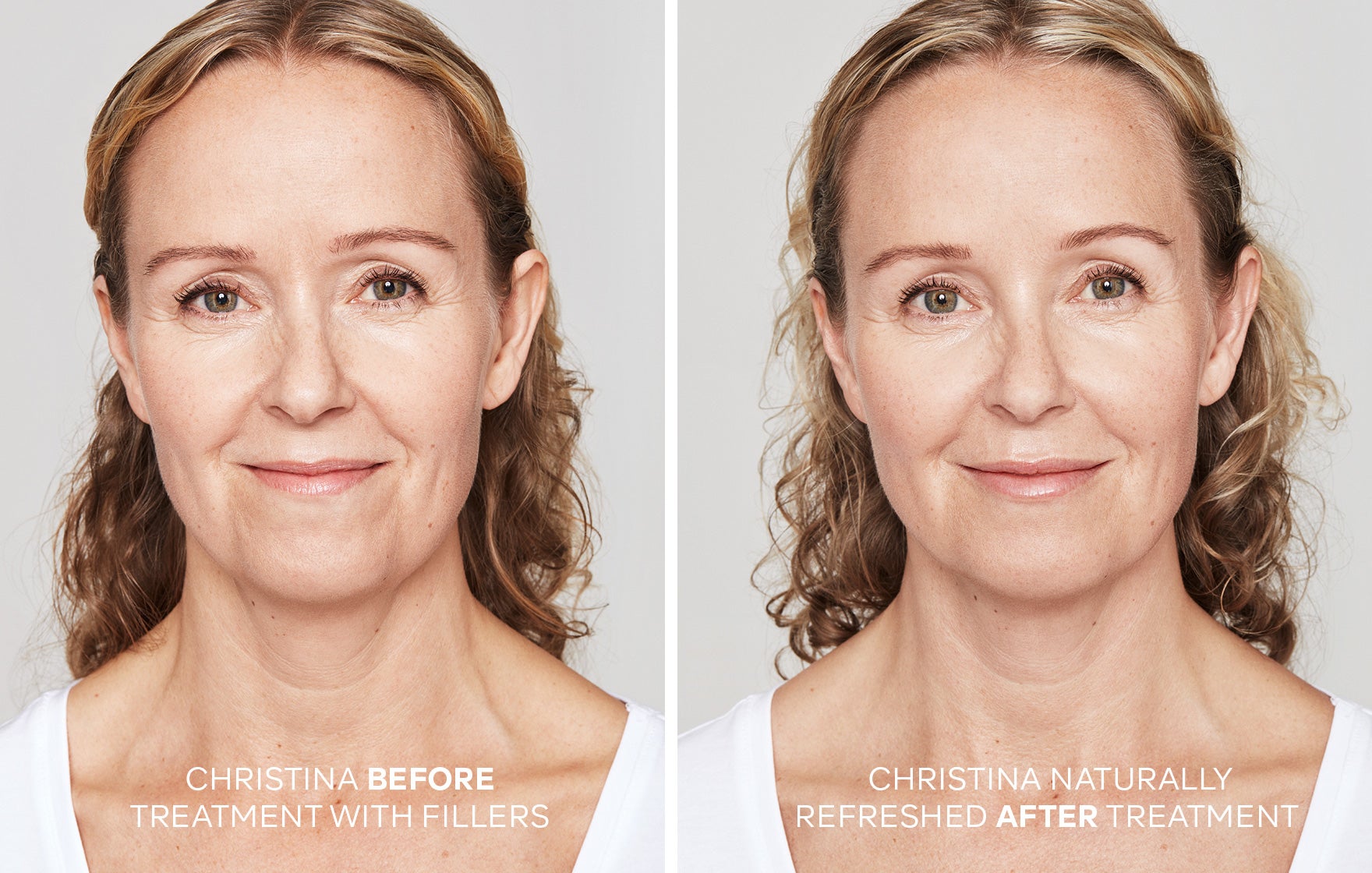
Are you new to fillers and wonder what they are made of? Are they toxic? Are they permanent? Will they give me duck lips? Are fillers and injectables the same thing or are there different types of fillers? Find out the answers to the questions you’ve felt too embarrassed to ask in this beginners’ guide to fillers.
Are fillers toxic?
One of the main misunderstandings regarding fillers is that they are toxic. Most fillers today are made from hyaluronic acid. Hyaluronic acid is a substance that is found all over in our bodies, for example in our eyes, joints, cartilage and skin. It’s a kind of sugar molecule, a polysaccharide, that forms long molecular chains and that can bind large amounts of water. Thereby, it keeps our body tissues flexible and soft and provides cushioning in the joints.
What kind of aesthetic product is a filler?
Fillers belong to a group of aesthetic products called injectables, that is, the product is injected into the skin.
The name filler reveals a lot. Fillers are used to fill, that is, to enhance or restore facial volume. With age, we tend to lose facial volume. For example, we lose some of the facial fat typical for a young person, which makes them look exactly that, young and youthful.
Also, the bones in our face can change and lose volume, which often is most visible at the temples and the posterior jaw. Even our eye sockets can descend somewhat with age. These kinds of changes can make us look worn and tired and of course older. Fillers can be used to treat these changes and to compensate for lost volume. Fillers are thus injectables but completely different from toxins that are used to relax our facial muscles.
Fillers (and other injectables) aren’t only about looking young
Fillers aren’t only used for treating age related changes. Some are bothered by their lips; others think their cheeks look flat. Then there are those that are troubled by facial asymmetry. Different types of fillers can be used to treat all of these problems in a very natural-looking way.
“People ask me if I am OK all the time...” (Female, 35-44, UK)1
“I just don't like looking so very tired all the time.” (Female, 55-64, UK)1
People have seldom chosen to look worn or tired. They want to look fresh and happy. Like “me on a good day”. Fillers and other injectables are seldom used to make people look strange. They are used to make people feel good about themselves and to feel more confident.
Why do people look so strange after filler injections?
But what about duck lips? Fillers make people look swollen, don’t they? How can it look natural when I see so many unnatural-looking results?
The result of a filler treatment depends on what you desire. If you consult a qualified healthcare practitioner, he or she will listen to your concerns and perform a filler treatment according to your wishes. Healthcare practitioners want happy patients. If you want a natural, refreshed look, your healthcare practitioner will adapt the treatment according to that wish.
How long do fillers last or are they permanent?
So, fillers are used to fill, to add volume in the face. But once you’ve had a treatment, is it permanent? What if it goes wrong, will you be “stuck” with a look you don’t like forever?
First of all, no, you will not be stuck with a look you don’t like for the rest of your life. Fillers, the ones most commonly used, aren’t permanent. The effect gradually subsides, how fast depends on the filler in question and where it’s injected.
Long-lasting but not permanent
The hyaluronic acid in our bodies is constantly broken down and then constantly reformed again. To prevent the filler from being broken down by the body in a matter of hours or days, the hyaluronic acid in fillers is “cross-linked” using a specific technology. The cross-linking makes the filler last longer. How long do fillers last? It depends, on both the filler in question and where it’s injected, but anywhere from several months to a year or two.2,3
For the cross-linking, a substance called BDDE (1,4-butanediol diglycidyl ether) is used. The end result is a three-dimensional matrix, a form of transparent gel, that is still very close to natural hyaluronic acid.
If naturalness is important for you, it can be good to know that some RESTYLANE® fillers, produced with the NASHA® cross-linking technology, have the least modified hyaluronic acid gel you can find on the market .4-6
Where does the hyaluronic acid in fillers come from? From animals?
In the beginning, the hyaluronic acid used in fillers was animal-derived, from rooster combs (before that, many fillers contained bovine collagen). Today, the hyaluronic acid in fillers is derived from bacterial fermentation.
To use non-animal derived hyaluronic acid for different types of fillers was of course an important milestone. So far, more than 50 million treatments with Restylane fillers have been performed worldwide.7
Different types of fillers for different types of treatment
With fillers you can fill wrinkles to make them less visible, add volume in the cheeks and lips or add structure to the nose and chin. Fillers can also be used to enhance facial contours and to correct asymmetries. Fillers are very versatile aesthetic injectables that can be used in many ways to make people look naturally refreshed, younger or anyother look they think is the best for themselves.
Some types of fillers add soft volume (in the cheeks and lips) whereas other fillers sharpen up our facial features. For optimal results, different gels are used for different types of fillers. Some fillers need to be firmer (to shape for example the nose) and others need to be softer (for the lips). A qualified healthcare practitioner will know what types of fillers to use that will give you the best possible result.
Summary
To conclude, fillers aren’t toxic. Fillers are made from hyaluronic acid, a natural water-binding substance that can be found all over our bodies. The hyaluronic acid used in fillers is stabilized to make it last longer. The effect isn’t permanent. The filler gel will gradually be broken down by the body’s enzymes.
Fillers are, as the name indicates, used to fill, to add/restore volume in the face, often to compensate for volume loss due to aging. Different types of fillers are used, depending on what you want to treat.
But what about the treatment itself? Does it hurt? Will there be side-effects?
References
- Data on file (MA-46075) European market survey by Opticom and Galderma, Q4 2020.Andriopoulos B et al. Poster presented at AMWC 2019.
- Data on file (MA-39364).
- Kablik J et al. Dermatol Surg 2009;35(Suppl1):302–312.
- Weiss RA et al. Dermatol Surg 2016;42:699–709.
- Narins RS et al. Dermatol Surg 2011;37:644–650.
- Data on file: MA-39680
